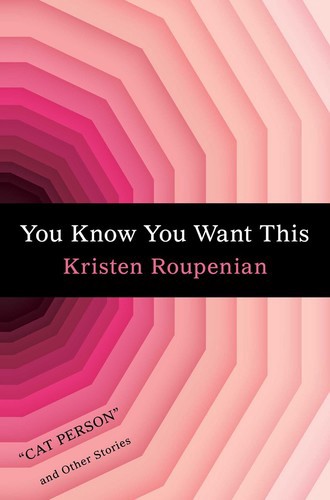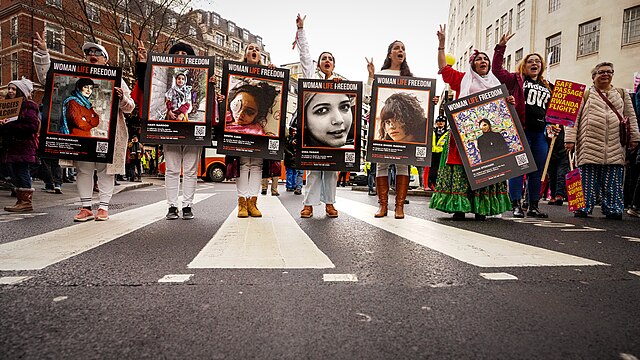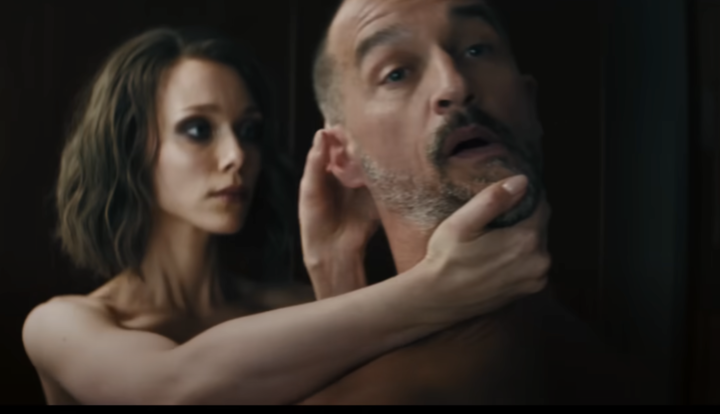interviews
The Author of “Cat Person” on Turning Your Worst Feelings into Fiction
Kristen Roupenian on using horror to explore the intersection of gender, sex, and power

Writers, editors, and publishers alike speak fearfully of the Curse of the Second Novel. Since short stories get shafted in terms of literary respect — made secondary to the Novel in general — “how to follow up a great short story” hasn’t really been a talked-about issue. As a topic of conversation, this is yet another thing we can add to the list of things Kristen Roupenian’s “Cat Person” changed after its publication in The New Yorker in December 2017.
You’ve probably read all the stats about the story and heard about the figures for the subsequent book deal. Those numbers are exciting in their way because they might force some philistines to finally give the short story the credit it deserves. But I would encourage you to go back to the source because Roupenian’s new collection, You Know You Want This, makes for far, far more dynamic reading. The 12-story collection includes “Cat Person,” but the better headline about the book would include “sex slave” or “killing your dad’s new girlfriend by fusing her into a multi-bodied monster made of other hateful people.”
Obviously the second idea is a bit tricky, so we will be forgiving towards people who use Roupenian’s stratospherically successful short story as a means of cluing in readers. In the following conversation, however, we didn’t talk too much about it. We talked about how she crafted her spare prose to explore villous and nebulous social territory. We talked about the way horror and fabulism can be used to do such exploration. And then, looking to the future beyond this story and this collection, we talked about what she believes fiction, at large, is capable of.
Lucie Shelly: Can you talk a little about the genesis of the collection? A lot of people will know your name from “Cat Person,” but I believe many of these stories were written before that piece went viral. Had you conceived the collection before then?
Kristen Roupenian: Yes. When “Cat Person” went viral, I had already begun putting the collection together: I had a title and a set of organizing themes, and I’d chosen the first and last story, (“Bad Boy” and “Biter.”) You Know You Want This includes stories written over the period of about five years. I wrote the first draft of the first story, “The Night Runner,” in 2013. I wrote “Death Wish” in the spring of 2018, after the collection had sold. After the book sold, with the help of my editor, I added two stories, and continued editing the individual stories, moving them around, and refining the themes.
LS: How has your writing been affected since the explosion of “Cat Person”?
KR: It’s been up and down. I’ve finished two stories I’m proud of — “The Good Guy” and “Death Wish” — and I’ve written a lot of nonfiction, but I’m still trying to figure out how to find the time and mental space to finish a novel given everything else I have going on. Talking and thinking too explicitly about what I’m doing in my work has a somewhat paralyzing effect on me, and a certain amount of that is necessary when you’re editing and promoting a book. Overall, though, I’m optimistic — I’m committed to doing the work that’s necessary to usher You Know You Want This into the world, but I’m excited to move on to other writing projects once that’s finished.
LS: As a single body of work, I felt the book could be read as very concept-driven. Stories seemed to take specific labels and stereotypes that are graphed onto women, and examine the effects of those entrapments. The hysterical woman, the sad single mother, the wild and beautiful young girl: it was as if these tropes were narrativized (perhaps horror-ized?). Was that an intentional construction and device? Or are these questions always and generally informing the way you observe the world?
KR: Yes, it is intentional, to a certain degree. I don’t usually write with an explicit device in mind, but I certainly have particular interests (gender, sex, power) that I return to again and again. When I was putting together You Know You Want This I was drawing from a larger pool of stories I’d written over a period of years, so I was able to choose ones that circled even more narrowly around a cohesive set of themes. The focus on teenage girls and young womanhood, in particular, seems like an artifact of the stage of life I was in — and emerging from — during the period that I was writing these stories, but it wasn’t something I was conscious of at the time.
LS: “Sardines” and “The Boy in the Pool” feature friend groups of girls. (As does “Look At Your Game, Girl” I suppose, but tangentially.) Friend groups are such a heady space to be in as a teenager. What kind of work did you do, mentally and emotionally, to put yourself back there?
KR: And so does “The Night Runner”! That was definitely one of the themes that didn’t become fully apparent to me until after the collection had been assembled. I don’t know that I did work to get myself there, exactly — it’s probably more the opposite; that the work of writing involved distancing myself enough from those very intense experiences that I could see them with some measure of clarity.
If I read and loved Stephen King when I was an eleven year old girl who’d never seen a monster, why shouldn’t some theoretical crotchety old man be able to enjoy a book about monstrous teenage girls?
LS: I guess it’s also a testament to how that age and stage is such fecund territory for fiction. What are your thoughts on translating this period into a universal story, one that doesn’t feel the confines of gender (“male/female” fiction), age (YA versus adult), or genre (also YA versus “literary” for the narrow-minded people who are still making that distinction…)?
KR: I tend to think that “universality” is in the mind of the reader rather than the writer; it takes practice to learn how to read across these divisions, and whether people are willing to do that for you depends on their own motivations and values, as well as the way that the book is marketed and sold. There’s probably not much I can do to market myself to a crotchety old guy who sniffs at stories about women, or “genre” stories or YA (I didn’t realize until just now that I’d hit that trifecta!) but once it’s in his hands, the methods I use to captivate and engage him are the same as the ones I use on anyone else. I think growing up with free range in the library and with the license to steal from my parents’ bookshelves made me skeptical of those divisions: if I read and loved Stephen King when I was an eleven year old girl who’d never seen a monster, why shouldn’t some theoretical crotchety old man be able to enjoy a book about monstrous teenage girls?
LS: Fair question! And I think the issues your stories consider reach across all kinds of divisions. In fact, I found that a lot of the pieces would have these striking lines or passages that distilled the story’s “issue,” so to speak. For instance, in “The Matchbox Sign,” you write, “Only then does he realize the full impact of what he’s done: in trying to help, he’s exposed all her weaknesses without asking her permission; used her secrets to prove to an outsider that her pain is all in her head.” When crafting a story, would you ever begin with this kind of kernel, something reduced down to a sentence, and expand outwards? Or do you feel you write towards the feeling, if that makes sense?
KR: It does make sense, and I’d say that my stories usually start with an ill-defined feeling (the claustrophobia of a close, caring relationship; the sickening feeling that arrives in the aftermath of a bad sexual encounter) and then writing the story consists in a large part of figuring out how to articulate the feeling… with the added twist that I usually write fairly introspective and self-conscious characters, so they’re always catching up to the feeling, analyzing it, and then experiencing the feelings that arrive in the aftermath of that analysis. In “The Matchbox Sign,” for example, David has that moment of self-awareness you described above, and yet it doesn’t magically solve anything; he has to keep muddling through. The limits of self-analysis, or self-understanding — where we go after we achieve those moments of “insight” — are very interesting to me.
My stories usually start with an ill-defined feeling and then writing the story consists in a large part of figuring out how to articulate the feeling.
LS: I’m curious about your influences as a writer. In the last few years, surrealism, horror, and fabulism have had a moment in mainstream literature, often as a way of examining the treatment of marginalized peoples. Carmen Maria Machado is a good contemporary touchstone, but Joyce Carol Oates was an early fabulist and feminist, particularly in her stories from the 1960s. In one of your stories, “Look At Your Game, Girl,” the protagonist Jessica is enticed by an older man in a similar way to Connie in Oates’s “Where Are You Going, Where Have You Been?” The moment when the man points his thumb and finger at Jessica and fires, it made my skin crawl in the same way! Was Oates an influence? Who are other writers you always carry with you?
KR: I’m a huge fan of Carmen Maria Machado, and her story, “The Husband Stitch” was transformational for me, I think in part for generational reasons: for the first time, I saw a writer at the height of her powers drawing from the same pool of urban legends and scary stories that I was shaped by as a kid. It blew me away, and expanded my sense of what was possible in short fiction. But you’re absolutely spot-on with the Joyce Carol Oates comparison, to a kind of uncanny degree — I was 100% thinking of “Where Are You Going, Where Have You Been?” when I wrote “Look at Your Game, Girl,” and in fact, in earlier drafts, the story was dedicated to her! Other writers I “carry with me” (great phrase) include Shirley Jackson, Ursula K. Le Guin, Ray Bradbury, and Stephen King.
LS: Looking at her canon, it’s clear how much Joyce Carol Oates did for female writers, and giving a narrative to the subtle, amorphous struggles women face. Do you hope your fiction will serve a similar purpose? Do you think there’s space for fiction and literature to inform the political discussions of today?
KR: I hope it can. At the same time, I think it does a disservice to fiction to try and shoehorn it too quickly, and too neatly, into contemporary political discussions. It can take time to experience a piece of fiction, to live in it, to let it settle in you, and to let it shape you. If you feel obligated to immediately form an opinion about everything you’ve read, and to draft it into serving as evidence for an argument, that can have a flattening effect on your reading experience. Of course, sometimes fiction can prompt a flash of insight or inspire you to act in the world, but it shouldn’t have to, and certainly not right away — so many times, I’ve read stories that have been meaningful to me, but I didn’t see how they shaped my understanding or behavior until years later.
LS: One of the stories in this collection that left me most unsettled was the very first, “Bad Boy.” A story about a three-way friendship (between a couple and a despairing single man who essentially becomes their sex slave), is a powerful narrative of relationship entropy. Your story does incredible work to parse the lines between friendship and lust, and sex and power. Sex and power in particular often seem impossible to disentangle. But, just as you did in “Cat Person,” you managed to spool a deft exploration out of something ambiguous. Can you talk a little about how that story came to be?
KR: “Bad Boy” started the way most of my stories start — I caught myself doing something that took me aback and slightly revolted me; in this case, forming strong opinions about my single friend’s failed relationships while I was part of a couple, and acting like kind of a bully about it. It’s hard to explain how that moment of unsettling self-insight led to the extremity of what happens in “Bad Boy,” but I guess that once I’d seen that flash of ugliness, I wrote a story that pushed it to its limits as a way of exorcising it: or to borrow an image from “Matchbox Sign” — it’s like I scratched at that itch until I was able to drag the parasite out from under my skin.
I’m excited for people who read ‘Cat Person’ to revisit it again in the context of the collection — in many ways, it’s a very different story.
LS: Lastly, I didn’t really get into “Cat Person” because I felt enough had been written and analyzed about that story. But was there anything that you felt was missed in what was said about it, or anything you felt got too much or too little attention?
KR: Oh man, I don’t know; it seems hard to add anything to such a massive conversation. But I will say that I’m excited for people who read “Cat Person” to revisit it again in the context of the collection — in many ways, it’s a very different story.









